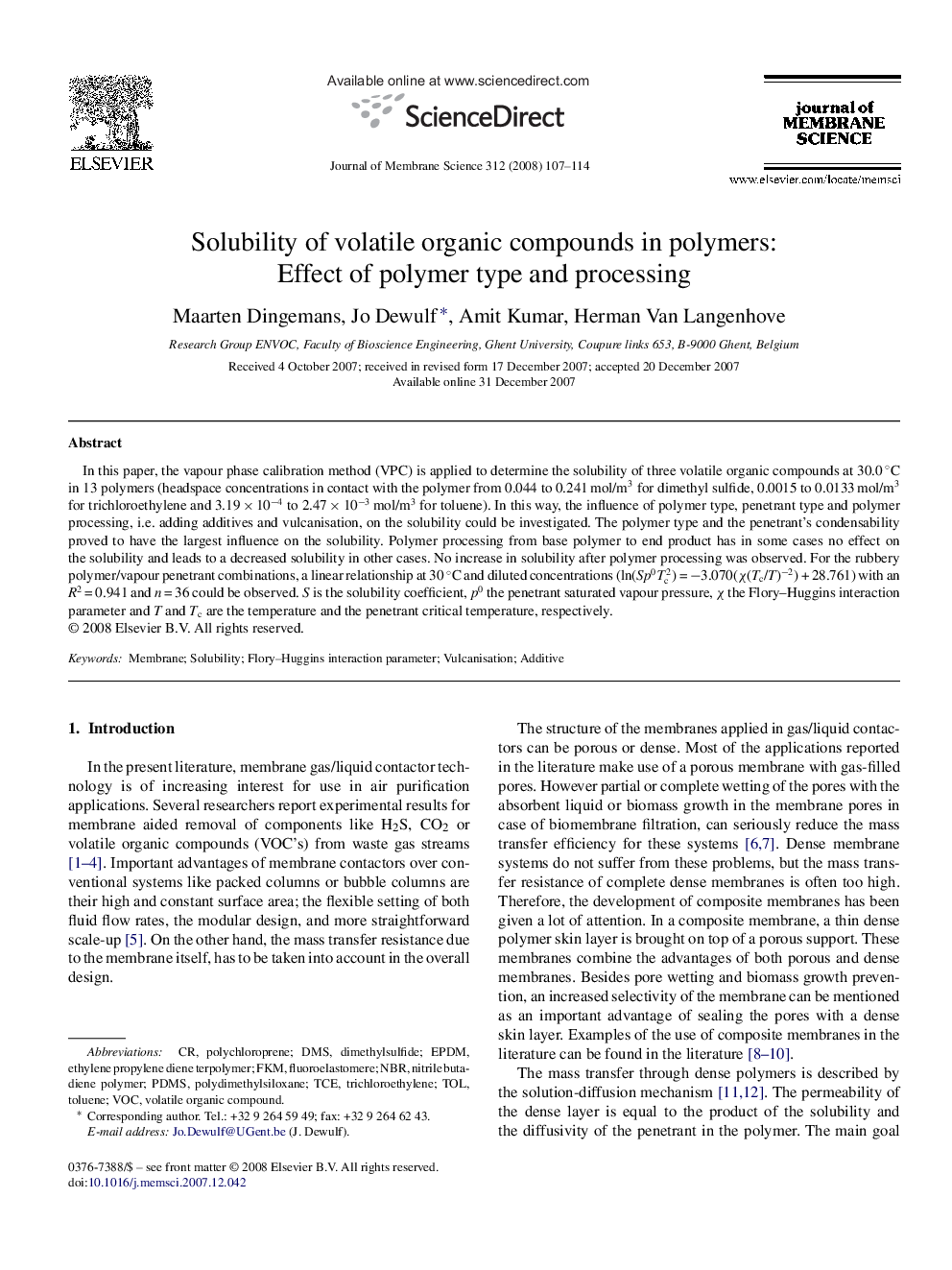| Article ID | Journal | Published Year | Pages | File Type |
|---|---|---|---|---|
| 638197 | Journal of Membrane Science | 2008 | 8 Pages |
In this paper, the vapour phase calibration method (VPC) is applied to determine the solubility of three volatile organic compounds at 30.0 °C in 13 polymers (headspace concentrations in contact with the polymer from 0.044 to 0.241 mol/m3 for dimethyl sulfide, 0.0015 to 0.0133 mol/m3 for trichloroethylene and 3.19 × 10−4 to 2.47 × 10−3 mol/m3 for toluene). In this way, the influence of polymer type, penetrant type and polymer processing, i.e. adding additives and vulcanisation, on the solubility could be investigated. The polymer type and the penetrant's condensability proved to have the largest influence on the solubility. Polymer processing from base polymer to end product has in some cases no effect on the solubility and leads to a decreased solubility in other cases. No increase in solubility after polymer processing was observed. For the rubbery polymer/vapour penetrant combinations, a linear relationship at 30 °C and diluted concentrations (ln(Sp0Tc2) = −3.070(χ(Tc/T)−2) + 28.761) with an R2 = 0.941 and n = 36 could be observed. S is the solubility coefficient, p0 the penetrant saturated vapour pressure, χ the Flory–Huggins interaction parameter and T and Tc are the temperature and the penetrant critical temperature, respectively.
